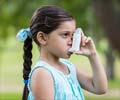The study highlights the importance of investing in early-life health, environment, and social resources can enhance health equity in pediatric asthma.

Neighborhood Opportunity and Vulnerability and Incident Asthma Among Children
Go to source). “Understanding neighborhood conditions could help researchers identify vulnerable children who are at high risk for developing asthma,” said study author Izzuddin Aris, PhD, of Harvard Medical School. “This information can also inform efforts by policymakers, researchers, and community groups to improve children's health and foster equity across neighborhoods.”
Child Opportunity Index and Social Vulnerability Index Assessment
Researchers in this study measured neighborhood conditions using the Child Opportunity Index and the Social Vulnerability Index, which link residential addresses at birth, infancy (age 0.5‒1.5 years), and early childhood (age 2.0‒4.8 years) to census-tract data about the opportunities and resources available in the surrounding neighborhood.‘Among kids born in neighborhoods with ample opportunities, asthma incidence rate stood at 23.3 cases per 1,000 children. #asthma #childhoodasthma’





Only the Child Opportunity Index, which measures neighborhood resources and conditions deemed essential for healthy child development, showed significant associations with childhood asthma incidence. The Social Vulnerability Index measures factors that make a community more vulnerable in the aftermath of natural or human-caused disasters. This study used data from 10,516 children at 46 research sites participating in ECHO, each having at least one residential address from birth and a parent or caregiver report of a physician’s diagnosis of asthma. These differences in the incidence of asthma persisted even after controlling for sociodemographic characteristics, parental asthma history, and the number of births a mother had.
Reference:
- Neighborhood Opportunity and Vulnerability and Incident Asthma Among Children - (https://jamanetwork.com/journals/jamapediatrics/article-abstract/2808879)









